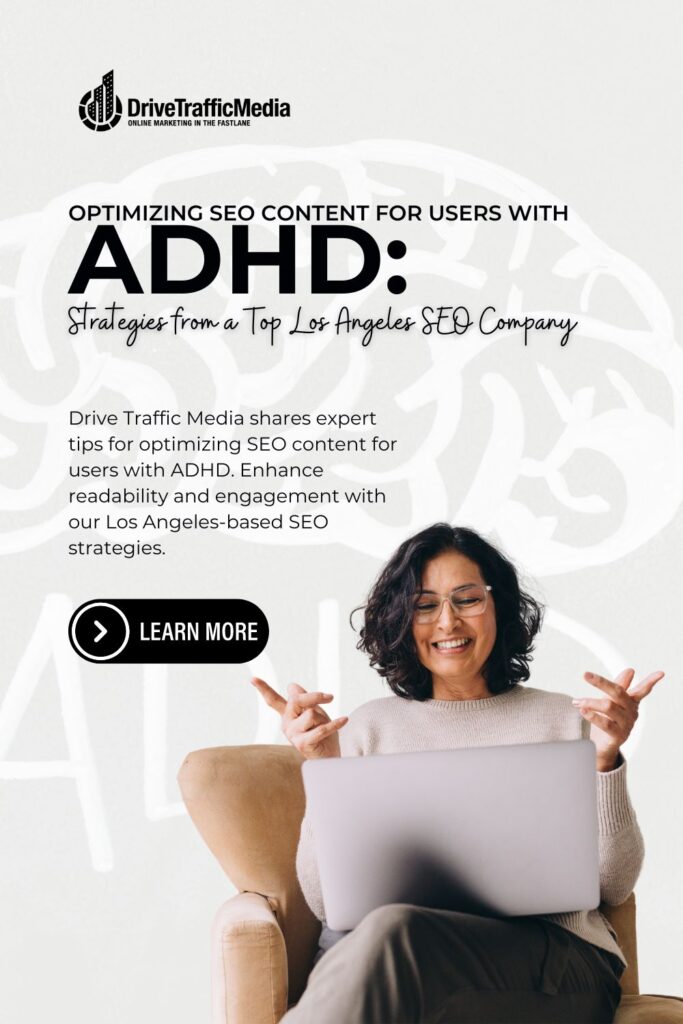
Making SEO Content for People with ADHD
Creating SEO content that caters to individuals with ADHD is crucial, especially in a competitive market like Los Angeles. Drive Traffic Media, a prominent SEO company in Los Angeles, outlines essential strategies to craft content that is clear, concise, and engaging, ensuring it meets the unique needs and preferences of this audience while optimizing for search engines.
Clear and Concise Headings
Utilize clear and descriptive headings to structure your content effectively. This aids readers with ADHD in navigating through the information more smoothly. Strategic placement of keywords within these headings can enhance SEO without compromising the content’s clarity, reflecting the essence of each section.
Short Paragraphs and Bullet Points
Maintain short, focused paragraphs to prevent overwhelming your readers. Bullet points and numbered lists can highlight critical information, making the content more accessible. This format is particularly beneficial for readers with ADHD, allowing them to grasp main ideas swiftly and without the strain of navigating dense text.
Engaging Visuals and Multimedia
Enhance your content with relevant visuals, such as images, infographics, and videos. These elements not only break up the text but also add context, making the content more engaging and easier to remember for individuals with ADHD. Drive Traffic Media emphasizes the importance of choosing visuals that are pertinent and support the textual content.
Use of White Space
Incorporate ample white space around text and visuals to reduce visual clutter and enhance readability. A clean and organized layout helps individuals with ADHD focus on the content without distractions. Avoid cramming too much information into tight spaces, which can be visually taxing.
Incorporate Interactive Elements
Engage your audience with interactive elements like quizzes, polls, or interactive infographics. These tools keep readers with ADHD engaged, enhancing their focus and retention of the information presented. Interactive content can make the learning process more enjoyable and effective.
Utilize Descriptive Subheadings
Further, break down your content with descriptive subheadings that clarify and guide readers through your article. These subheadings should reflect the upcoming content accurately, helping those with ADHD to follow the flow of information and maintain engagement.
Optimize for Readability
Select fonts and sizes that are easy to read to accommodate readers with ADHD who might struggle with small or intricate text styles. Opt for a simple design with high contrast between text and background colors to maximize visibility and readability.
Provide Clear Calls to Action
End your content with definitive calls to action, such as encouraging readers to sign up for a newsletter, read related articles, or share content on social media. These prompts help guide readers with ADHD by suggesting next steps, fostering continued engagement.
Conclusion
Drive Traffic Media, your trusted SEO partner in Los Angeles, is dedicated to creating SEO content that is not only accessible to individuals with ADHD but also optimized for search engine performance. By employing these thoughtful strategies, you can ensure your content resonates with this audience, making it more effective and enjoyable while achieving your SEO goals.


